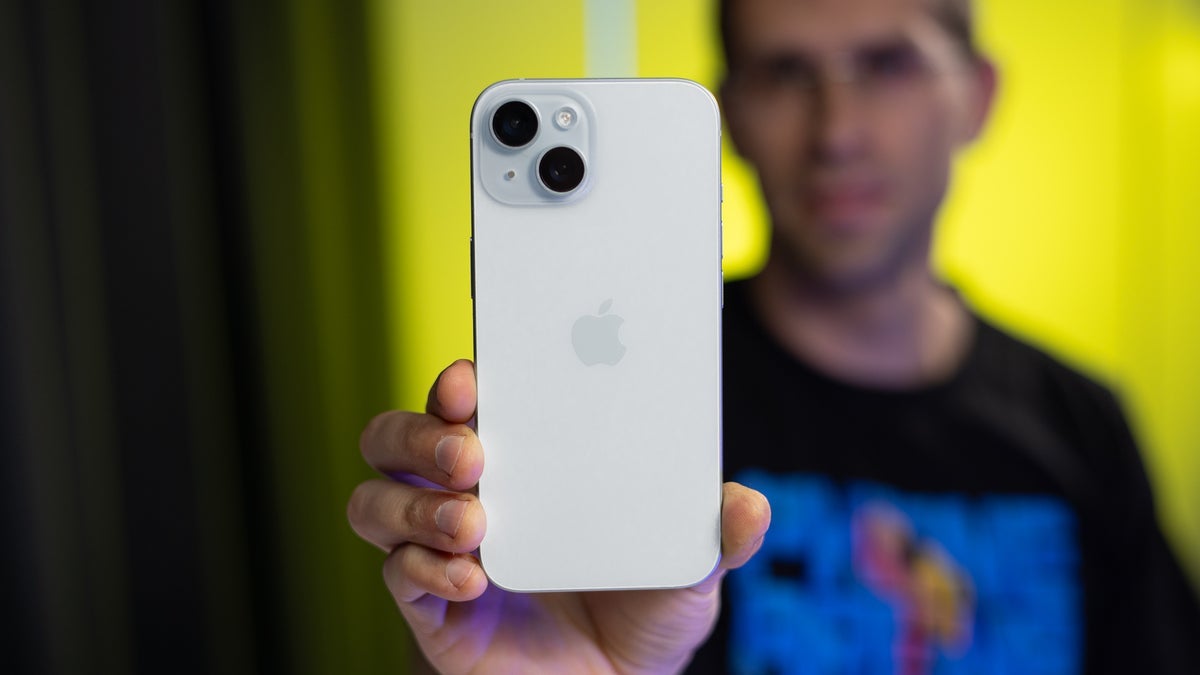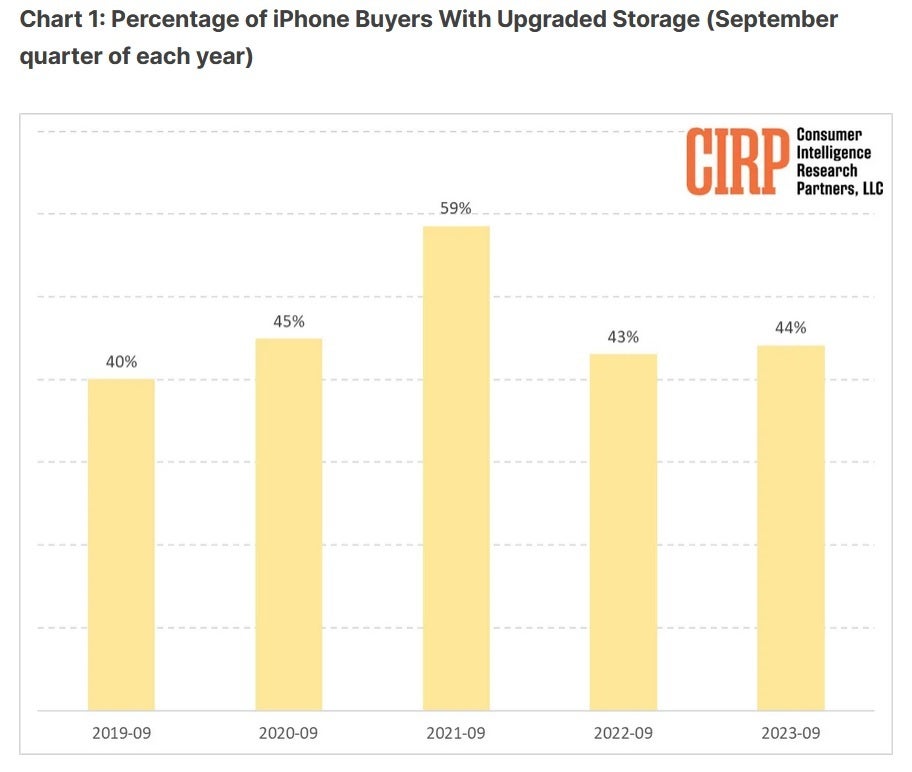Data shows U.S. iPhone buyers choosing base amount of storage returns to normal levels

According to Consumer Intelligence Research Partners, CIRP, two factors determine the Average Selling Price (ASP) of the iPhone. One is the popularity of different models. More sales of the higher-priced Pro models compared to the non-Pro variants will raise the ASP of the iPhone for that particular launch year. The other factor that contributes to the ASP of the iPhone in any given year is the amount of storage capacity of the most popular models being purchased by consumers.
CIRP computes what it calls the U.S.-Weighted Average Retail Price (WARP). This takes into account not only the iPhone models being purchased by U.S. consumers during the September quarter when new iPhone models are traditionally launched, it also takes into account the decisions made by consumers whether to pay for a unit with additional storage than the base model.
Based on data just published by CIRP, the number of iPhone buyers who bought a new iPhone with more than the base amount of storage peaked at a whopping 59% during the September 2021 quarter, a result that might have been affected by the pandemic. At that time, iPhone buyers wanted the extra storage just in case they needed it for their remote work or for downloading video games and streaming entertainment.

The percentage of U.S. iPhone buyers purchasing a model with more than the base amount of storage at launch has returned to normal
Just two years before the peak year, the data for the September 2019 quarter showed that only 40% of U.S. consumers buying a new iPhone model opted to pay the higher price for a version with more than the basic amount of storage. The following year, for the September 2020 quarter, 45% of state-side iPhone buyers bought new iPhone units containing more than the base amount of storage. But since that peak September quarter in 2021, the numbers have returned to normal.
In the September 2022 quarter, 43% of those buying a new iPhone model in the U.S. purchased their device with more than the base amount of storage and that figure rose to 44% for the most recent iPhone launch last September. This return to the baseline percentage means that the U.S.-WARP for the iPhone has declined since more people in the U.S. are buying the lower-priced models with the base amount of storage. CIRP says that the U.S.-WARP for the iPhone in the September 2023 quarter had declined 4.1% year-over-year to $918.
CIRP says that the use of cloud storage and the increase in streaming content took the pressure away from new iPhone buyers to buy new models with more than the base amount of storage to accommodate larger photo galleries, app libraries, and music collections. On the other hand, CIRP notes, "Countering that lessening pressure, the lengthening of purchase contracts, and move toward keeping phones for longer periods may push buyers to 'future-proof' their phones by purchasing expanded storage."
Follow us on Google News














Things that are NOT allowed:
To help keep our community safe and free from spam, we apply temporary limits to newly created accounts: